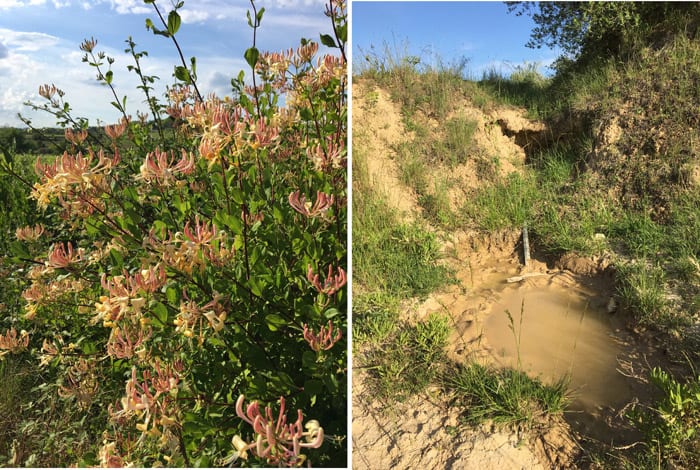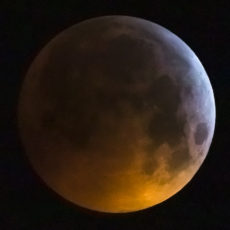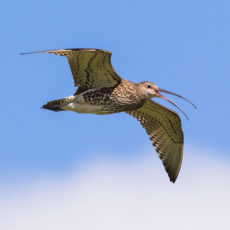Guest post by Rachel Everett
I can’t remember a time when I didn’t love nature. Or, more than that, didn’t feel immersed in, absorbed by, nature. Face down, lying on the smooth concrete surrounding my parents’ 1950s tank of a pond, nose almost to the water; so, so, close to the smooth newts as they tail flicked and nudged, peering into the green water for the telltale wrapping of a single egg in a curly Canadian pondweed leaf. When I was older, boyfriends and makeup held no competition for days wandering the local woods with heavy, too-big-for-me, binoculars slung around my neck, scouting for birds or badger prints. Or down by the weirs, dipping for snails and beetles, the rush of the river in my ears.

There was another nature too, which was equally transfixing. This nature smelt not of damp and moss and wet leaves but of lavender, rosemary and pine. This was the nature I anticipated all year long, until my family finally made the long annual drive to visit my Catalan relatives. Sleepy afternoons in the town listening to the bells chiming the hours, or swimming with my cousins at the beach were fun, but best of all was the chance to wander the woods – different woods – where I knew there were boar and beech marten (though I never saw them) and where the heat-laden summer air sighed in the branches and the silence was broken only by the zizz of elusive cicadas (so hard to spot!).
Caring about how your food is produced
So when my son and I decided that we wanted to start importing from Catalonia it seemed only logical that we should focus on organic wines. It seems to make sense that if you love nature you should also care about how your food is produced and the impact that production has on the natural surroundings. We wanted to be sure that the wines we enjoyed were sustainable, allowing the plants and animals that I had discovered as a child to flourish alongside the vines and their delicious harvest of jewelled grapes.
I think people forget, despite the rapid growth of the UK wine industry, that wine is an agricultural product in the same way as apples, strawberries or rhubarb – part of the ancient Mediterranean triad of wheat/olive oil/wine: very basic foodstuffs. Like any other kind of farming, large scale production of grapes in Catalonia (particularly for the big producers) has led to sterile monocultures. In the fields around my home here in the UK, there are lifeless deserts of oilseed rape and immaculately empty rows of wheat. In the fields around my other home near Barcelona there are equally lifeless deserts of vines, all sprayed and pruned into conformity.
Organic and biodynamic farming
Fortunately for us, if you want organic grapes and wine-making, Catalonia is just the place to look. Over 20% of all grapes grown are under organic cultivation, with 14.880 hectares registered in 2017. The number is rising year on year. Many producers adhere to EU endorsed CCPAE standards (Consell Català de la Producció Agrària Ecológica). Others go further with biodynamic farming and the mavericks skip the red tape and just get on with it. So where to start?
Our first port of call was with one of the pioneers of modern organic viticuture (cultivation and harvesting of grapes): Mas Comtal, a small winery with 40 hectares of vines, located just outside Vilafranca del Penedès, where my mother was born. Mas Comtal is something of an oasis amongst a sea of conventionally farmed grapes, where there are swallows overhead and butterflies amidst the vines. Headed by Marta Milà the family decided to convert to organic wine-making over twenty years ago and achieved CCPAE certification in 2001. The family are committed to sustainability and are founder members of two initiatives to promote this. I should add that good wine is as much grown in the fields as made in the winery. Each harvest is different and so each vintage of wines reflects the weather and ripening conditions in that specific year. Some wines are only made when conditions are right and blends can vary depending on how each variety ripened. All this is achieved without spraying the fields, but by careful cultivation or sneaky alternative means like the pheromone traps twisted onto the vines, ready to intercept the life cycle of the European Grapevine Moth, Lobesia botrana, whose caterpillars are partial to grapes.

Just down the valley and within sight of Mas Comtal is Eudald Massana Noya’s winery, where the birdsong strikes you as soon as you arrive; Golden Orioles and Cetti’s Warblers in the poplars fringeing the stream in the valley bottom and larks in the vineyards. Also a pioneer in reintroducing organic, or as he calls it: “normal” farming, he’s gone further and opted for biodynamic viticulture. For Eudald farming, far from being a manufacturing process, is part of and tied into the rhythm of the seasons and the stars. He sees his farm as part of nature, not controlling nature, and is proud to point out the coexistence of the vineyard and the wildlife that inhabit it. As he puts it, the boar are welcome to snack on a few grapes and in return they leave his melons alone!
Organic vineyards offer wild boar a place to wallow and throng with birds an insects

Eudald must have the most pampered vines in Catalonia. Each plant is treated as an individual and in addition to using biodynamic preparations to support plant health is given the best conditions to thrive. Eudald practices ancient cultivation techniques: lightly ploughing to break the surface and reduce evaporation if conditions are too dry, or leaving a lush growth of wildflowers to remove moisture if conditions are too wet.
Farming in harmony with and respect towards the natural world
Then there are the farmers who’ve never converted from organic farming in the first place. Celler Comalats is situated in the tiny village of L’Ametlla de Segarra, a huddle of pantiled roofs clustered around the remains of an 11th century castle. In the early Middle Ages this was frontier territory and with depopulation it has a little of that feel today. It’s 20k to the nearest main road and the village is down to 14 permanent inhabitants, among them are the Bonet family whose generations have resided here for 800 years. The absence of human noise is profound, replaced by the wind in the trees and the calls of birds and insects. (I’ve still to identify the warbler who serenaded us as we wine-tasted on our first visit).
As was then fashionable, Jaume Bonet planted Cabernet Sauvignon 30 years ago but his vines have never been sprayed or irrigated. At 720m the landscape is dry and harsh: hot in the summer and freezing in winter. Fungal problems are rare and the low yields of high quality. Ground nesting birds are left undisturbed, as are those encountered nesting in the vines themselves during green-pruning in spring. Even the wines are named after them: Alosa, the lark and Esparver, the sparrowhawk. Gavernera, the family’s rosé wine, is named for the wild rose of the field margins. With climate change the Bonets are facing even harsher conditions, yet their commitment to sustainability is such that instead of irrigating they’re replanting with tougher native varieties.
Even in the winery the Bonets work with minimal environmental impact. Fermentation is spontaneous (with the yeasts naturally present on the grapes rather than bought in a packet) and there is no temperature control. Last winter was especially cold and so the 2017 wines have only just been released, snapshots of a single year in a bottle.
The Milà family at Mas Comtal, Eudald and his family, and the Bonets are all long-established wineries who have been honing the production of sustainable wine-making for a long time. Dotted across the Catalan countryside there are others, however, who are joining the movement. Very often they are younger members of farming families who have studied oenology (wine-making) at uni and have come home determined to break from the practice of simply producing as many grapes as possible of any quality to sell on to the big wineries. Instead they’ve returned to wine-making on the farm after a lapse of many years. Some of this is pragmatic ― the big producers historically pay little for grapes and making a living from farming them has become increasingly difficult ― but it is also tied to a movement for authenticity and a more satisfying way of life.
The word “respectuós” (respectful) is one you see over and over again in relation to these winemakers. They aim to respect the land they farm. This means that many are returning to the mixed agriculture of their ancestors and are producing wheat, vegetables, olives, fruit, and even honey, as well as grapes for wine. This is returning the landscape to its traditional, far more wildlife friendly patchwork of habitats.
At VallDolina, perched in the Garraf mountains not far from the holiday town of Sitges, Raimon Badell is one of these farmers. His land is not just wildlife friendly but sits within a Natural Park, a broken karstic landscape of fissures and caves, with little surface water and specialities like the European Fan Palm, breeding Bonelli’s Eagles and one of the few remaining populations of Herman’s Tortoise. He has a traditional mix of crops, with his vineyards located on tiny terraces dotted amongst the kind of pinewoods I loved so much as a child. Here the grapes are part of the woods, unsprayed and left with a ground cover of wildflowers. Like Comalats, Raimon is replanting with traditional varieties more resistant to climate change and in the winery, experimenting more and more with “natural” wines; just pure fermented grapes, which in wine-making terms, best reflect their “terroir” or landscape which produced them.
Meanwhile Ignasi Segui of Vinyes Singulars, just outside Vilafranca del Penedès, whose wines are always experimental, has the same approach to his mixed farm. When we first visited he was excited about leaving as much fennel in the field margins as possible to tempt the snails away from his vines and was busy putting up bat boxes as a way of controlling the grape moths. And, on the other side of Vilafranca, Jordi Raventós is one of the winemakers returning to using traditional donkey power, rather than tractors, as a more sustainable way of carrying out the light ploughing traditionally used to control moisture levels or fertility in the soils. His vineyard is tiny and he is committed to bringing back varieties almost lost to cultivation, like Red Malvasia de Sitges. Vines far better adapted to the local conditions than more well know grapes like Chardonnay.

How to coexist with the Nearby Wild
I can’t imagine wanting to work with producers who don’t think like Marta, or Ignasi, or Eudald. In the same way that I don’t want to eat factory-produced sliced white bread and would rather eat my own organic homemade food. I’d much rather drink delicious wines that are what you think they are, fermented grape juice, not a cocktail of additives. And of course, I’d much rather work with people who care about the other Nearby Wild I fell in love with as a child.


